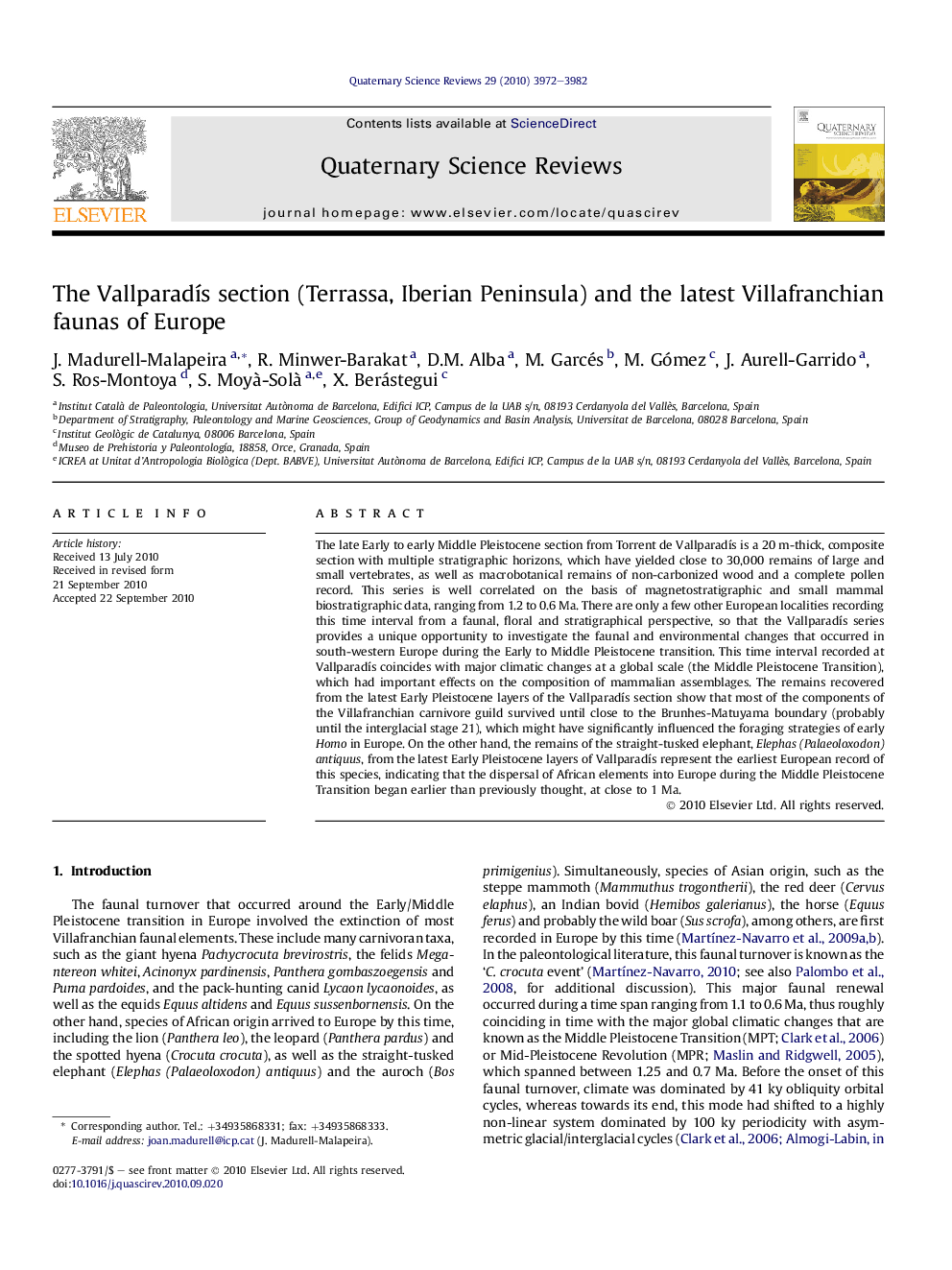| Article ID | Journal | Published Year | Pages | File Type |
|---|---|---|---|---|
| 4737144 | Quaternary Science Reviews | 2010 | 11 Pages |
The late Early to early Middle Pleistocene section from Torrent de Vallparadís is a 20 m-thick, composite section with multiple stratigraphic horizons, which have yielded close to 30,000 remains of large and small vertebrates, as well as macrobotanical remains of non-carbonized wood and a complete pollen record. This series is well correlated on the basis of magnetostratigraphic and small mammal biostratigraphic data, ranging from 1.2 to 0.6 Ma. There are only a few other European localities recording this time interval from a faunal, floral and stratigraphical perspective, so that the Vallparadís series provides a unique opportunity to investigate the faunal and environmental changes that occurred in south-western Europe during the Early to Middle Pleistocene transition. This time interval recorded at Vallparadís coincides with major climatic changes at a global scale (the Middle Pleistocene Transition), which had important effects on the composition of mammalian assemblages. The remains recovered from the latest Early Pleistocene layers of the Vallparadís section show that most of the components of the Villafranchian carnivore guild survived until close to the Brunhes-Matuyama boundary (probably until the interglacial stage 21), which might have significantly influenced the foraging strategies of early Homo in Europe. On the other hand, the remains of the straight-tusked elephant, Elephas (Palaeoloxodon) antiquus, from the latest Early Pleistocene layers of Vallparadís represent the earliest European record of this species, indicating that the dispersal of African elements into Europe during the Middle Pleistocene Transition began earlier than previously thought, at close to 1 Ma.
